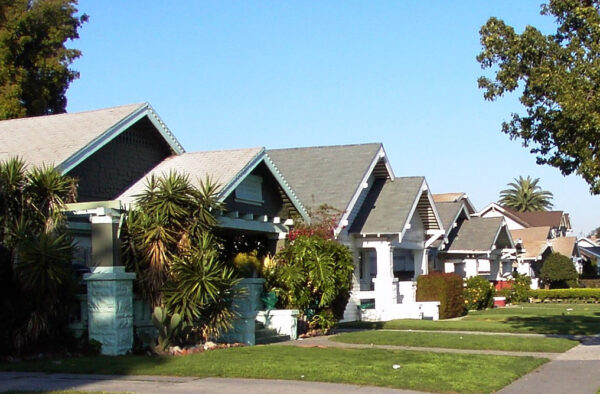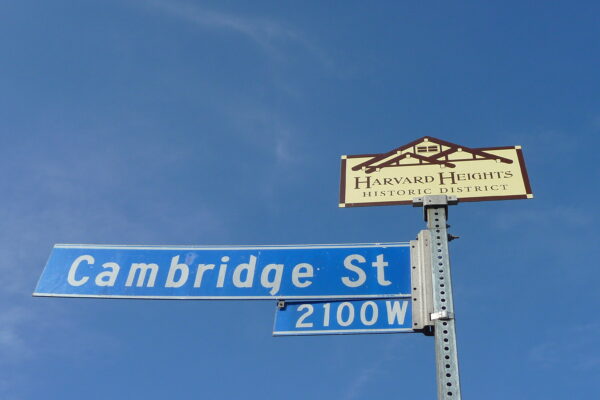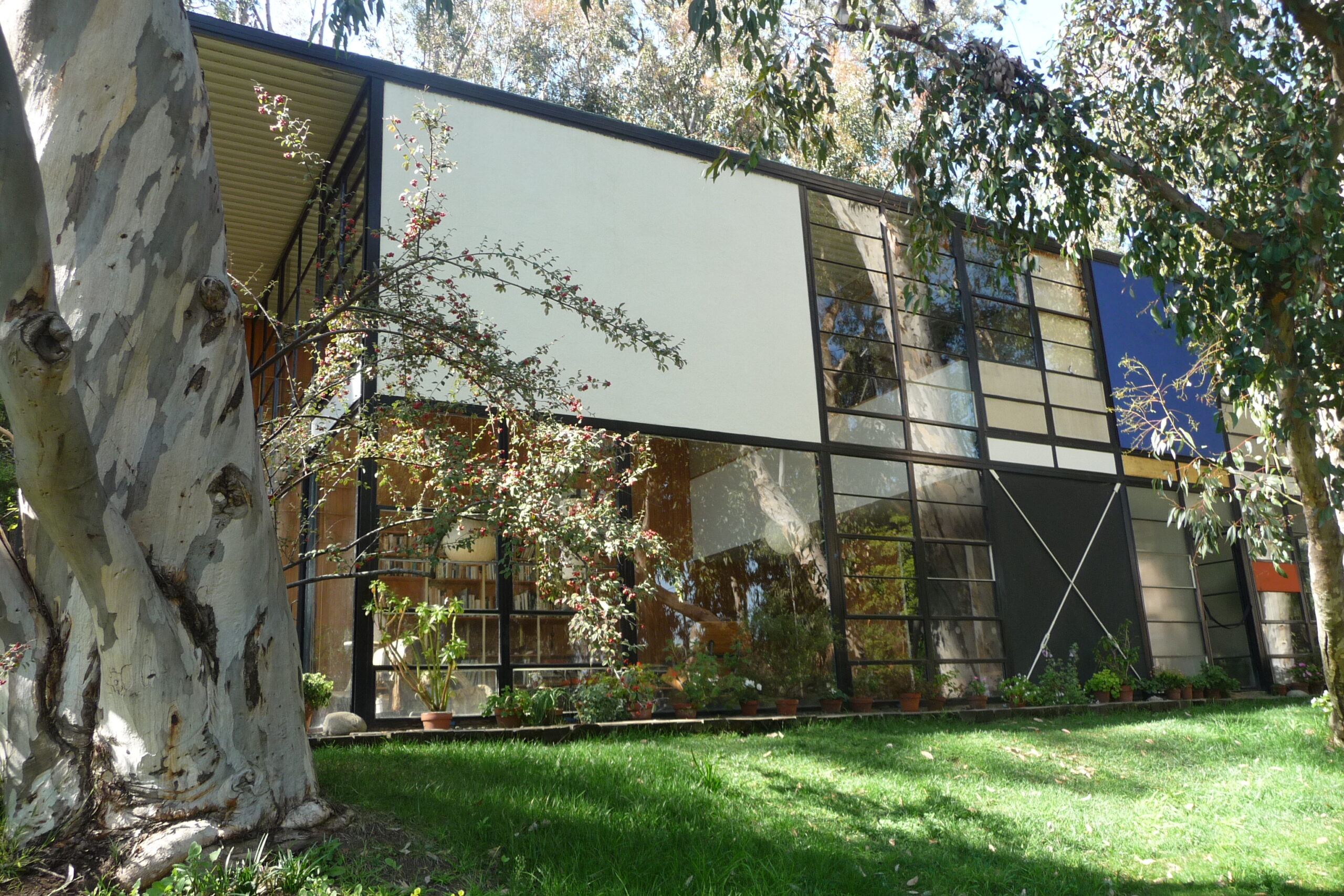
Saved
Funding for Neighborhood Preservation
Every year, we advocate for adequate staff funding in the City of L.A. budget to support historic neighborhoods.
Saved
Places that have survived threats of demolition or excessive alteration.
Overview
In 2017, the Conservancy again helped restore funding in the City of Los Angeles’ budget for neighborhood conservation.
The Los Angeles Department of City Planning asked for $396,624 in the 2017-18 budget to fund four staff positions to support the City’s Historic Preservation Overlay Zone (HPOZ) program, part of the Department of City Planning’s overall Neighborhood Conservation initiative.
This amount needed for staff was a relatively miniscule percentage of the City’s overall proposed budget of over $9.2 billion. Yet because these staff members will work to protect more than thirty-five historic neighborhoods across the city, this small investment offers a tremendous impact for many years to come.
The staff positions focus on historic districts (known in the City of Los Angeles as Historic Preservation Overlay Zones, or HPOZs). Between 2016 and 2017, the HPOZ program grew by twenty percent, yet staffing levels remained constant. The number of applications and requests for assistance far outpaced staff capacity, creating a significant backlog.
However, the mayor’s proposed budget omitted the minimal funding needed for these position, threatening work on HPOZs throughout the city.
Inadequate staffing levels would have blocked any new neighborhoods from becoming HPOZs, leaving them vulnerable to rampant teardowns and mansionization.
With the help of Conservancy supporters, like-minded organizations, and community members, we kept pressure on City leaders to pay attention to this issue amid the many other competing priorities in the proposed budget.
As a result, the final budget restored this critical funding, ensuring adequate staffing to support historic neighborhoods throughout Los Angeles.
About This Issue
Each year since the 2014-15 budget cycle, the Conservancy and neighborhood advocates have come together to advocate for stable and consistent funding for neighborhood conservation positions.
With a relatively small investment, older and historic neighborhoods can have the necessary staff to help residents maintain their neighborhood’s distinct community character.
The 2016-17 budget cycle listed four priorities, including “A Livable and Sustainable City.” The preservation of neighborhoods supports this goal by maintaining existing neighborhoods as distinctive and enjoyable places in which to live. Nothing is more sustainable or “green” than reinvesting in and reusing our existing resources, which includes the city’s older and historic neighborhoods.
Creating a more sustainable and livable city
Historic Preservation Overlay Zones (HPOZs) and neighborhood conservation tools make Los Angeles more livable in a number of ways:
- They protect the unique, authentic character of older and historic neighborhoods. HPOZs are one of the few tools we have in Los Angeles to protect the character of historic neighborhoods from increasing mansionization and overdevelopment.
- They enhance livability for everyone. The city’s thirty HPOZs range widely in size, location, and demographics. Most of them have a median income lower than the citywide median, dispelling the myth that preservation is only for the wealthy.
- They enhance property values and protect homeowner investment. Properties in local historic districts often experience greater property value increases than do similar properties elsewhere. Historic district designation gives buyers assurance that the unique character and ambiance that attracted them to the area in the first place will endure over time, which actually creates economic value.
- They can lead to significant tax savings for property owners. Owners of contributing structures in HPOZs can reap potentially significant tax savings (in some cases, up to 50%) through the Mills Act Historic Property Contracts Program. This program allows qualifying owners to receive a potential property tax reduction and use the savings to help rehabilitate, restore, and maintain their buildings.
- They help protect large numbers of historic resources. By covering a swath of properties, historic districts can cover more ground—literally—than individual landmark designation alone. Currently more than 25,000 parcels are offered protection and design review through the City’s HPOZ program.
- They help build community. Working together to create and maintain a historic district can bring neighbors together, build a sense of community, and foster civic pride. This cohesiveness often helps the neighborhood address other issues, such as crime and safety.
- They encourage better design. Nationwide, comparative studies have shown that there is a greater sense of relatedness, more innovative use of materials, and greater public appeal within historic districts than in areas without local historic designations.
- They reuse existing resources. Preservation fosters sustainability by reusing existing buildings. According to the National Trust for Historic Preservation, “The construction, operation and demolition of buildings accounts for well over 40% of the United States’ carbon dioxide emissions. Reusing and retrofitting our existing built resources is the first step to cutting these emissions and ensuring that our communities are more sustainable.” The National Trust study, The Greenest Building: Quantifying the Environmental Value of Building Reuse, states that even the most energy-efficient new home can take up to eighty years (with an average of 20-30 years) to overcome the negative environmental effects of the initial demolition and construction of the new home.
Teardowns and mansionization hurt older and historic neighborhoods in a variety of ways, including:
- The historic character of the existing neighborhood is lost as older homes are demolished and replaced with dramatically larger, out-of-scale new structures,
- Neighborhood livability is diminished as trees are removed, backyards are eliminated, and sunlight is blocked by towering new structures built up to the property lines.
- Community economic and social diversity is reduced as new mansions replace affordable homes.
Creating and maintaining HPOZs and addressing mansionization issues is entirely a City service, and it clearly makes our neighborhoods more livable and attractive.
HPOZ staff members handle a vast range of tasks, from evaluating proposed exterior changes to HPOZ properties, to reviewing surveys for new HPOZs, working with community members on education and outreach, creating required preservation plans for each HPOZ, and more. The same can be said for the need to adequately staff anti-mansionization issues, by working closely with the neighborhoods that need and require this type of assistance.
Yet staffing levels have not kept pace with the increasing demand as more residents seek to form HPOZs and address mansionization, and the improving economy fuels construction and rehabilitation efforts in older and historic neighborhoods. At this point, this city service is at full capacity and can no longer serve the needs of potential or pending HPOZs and neighborhoods seeking relief from teardowns and mansionization.
Advocating for these positions and funding is not new, as the Conservancy has mounted support in the last three City budget cycles.
In 2014-15, after much discussion, intensive advocacy by the Conservancy and community members throughout Los Angeles, and a Los Angeles Times editorial in support of older and historic neighborhoods, the Los Angeles City Council approved a budget that included funding for City Planning staff devoted to neighborhood conservation. The Conservancy worked with HPOZ leaders and community activists throughout the city, to generate letters to the City Council urging them to add this funding to the budget.
In 2016-17, Councilmember Paul Koretz introduced an amendment to the budget that restored funding for key positions in response to efforts led by the Conservancy and community advocates.
Thank you all who provided testimony, sent emails and letters, and personally reached out to your member of City Council in this effort. We could not have done this without your help.
Our Position
For more than thirty-five years, the Conservancy has worked to protect older and historic neighborhoods in Los Angeles through the creation of Historic Preservation Overlay Zones (HPOZs). Our efforts range from helping to create the HPOZ Ordinance in the late 1970s to advising residents who want to form an HPOZ, training HPOZ leaders and city planners, and showcasing HPOZs through public tours.
We’ve seen firsthand how HPOZs build community, enhance quality of life, fuel reinvestment, increase property values, help owners maintain and improve their homes, and offer tax savings through the Mills Act. The benefits of HPOZs are significant and undeniable (see “Issue Background” tab).
Staffing is essential to creating and maintaining HPOZs and helping to conserve the character of older neighborhoods.
From reviewing historic resources surveys to crafting preservation plans, evaluating proposed changes to properties, community outreach, and much more, each step in the process relies on professionals who are skilled in preservation standards, neighborhood conservation policy, and practice.
While the Planning Department has streamlined processes to maximize staff resources, it can’t establish any new HPOZs without more staff. Some neighborhoods linger in the pipeline for more than a decade. As these neighborhoods remain in limbo, awaiting conservation and protection, they continue to experience inappropriate alterations and overdevelopment pressures.
Los Angeles has the second-largest program of historic districts in the U.S., second only to New York City. L.A. has more than thirty-five Historic Preservation Overlay Zones (HPOZs) encompassing more than 25,000 parcels throughout the city.
By contrast, New York City’s historic districts contain about 30,000 properties. Although their program is not identical to that in Los Angeles, New York City has nearly seventy staff members devoted to historic resources. In comparison, Los Angeles has a staff of approximately ten.
The Conservancy strongly contended that L.A.’s budget for fiscal year 2017-18 should include the funding for four staff members for the Department of City Planning dedicated to the HPOZ program. Without more staff devoted to neighborhood conservation, the already small Office of Historic Resources would not be able to finish processing its backlog or accept any new applications in the future.
The City’s highly efficient and effective HPOZ and neighborhood conservation programs would stall, older and historic neighborhoods throughout the city would be more vulnerable to demolition or excessive alteration, and our fragile cultural heritage would continue to chip away.
Once historic places are gone, they’re gone forever. A relatively minor investment in City Planning staff easily prevents the loss of unique, authentic neighborhood character before it’s too late.












